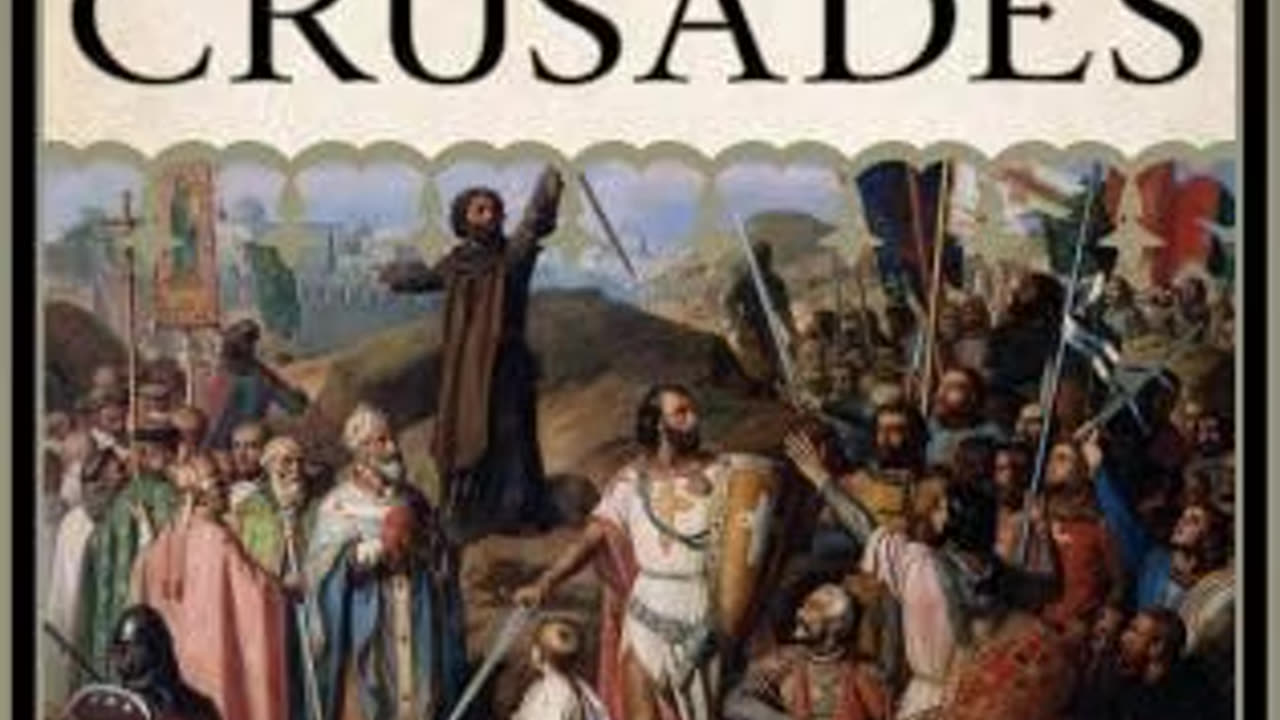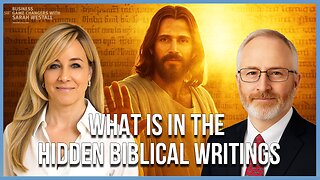Premium Only Content

The Concise History of the Crusades by Thomas Madden | Summary
Buy Here: https://amzn.to/3QCnDzA
""The Crusades: The Authoritative History of the War for the Holy Land"" by Thomas Madden is a comprehensive and well-regarded historical account of the Crusades, a series of religious and military campaigns launched by Western Christians in the medieval period to regain control of the Holy Land from Muslim rule. Thomas Madden, a prominent historian, provides a detailed analysis of the Crusades and their significance in shaping the history of the medieval world. Here is a summary of the key points and themes explored in Thomas Madden's ""The Crusades"":
1. Background and Context:
Madden sets the historical context by examining the political and religious dynamics in Europe and the Middle East during the 11th to 13th centuries. He discusses the rise of Islam, the division between the Eastern Orthodox and Roman Catholic Churches, and the growing tensions between Christians and Muslims over control of Jerusalem and other holy sites.
2. The First Crusade:
The book delves into the First Crusade, which was called by Pope Urban II in 1095. Madden narrates the journey of the Crusaders from Western Europe to the Holy Land and their successful capture of Jerusalem in 1099.
3. The Crusader States:
Madden discusses the establishment of Crusader states in the Levant, including the Kingdom of Jerusalem, the County of Edessa, the Principality of Antioch, and the County of Tripoli. He explores the challenges faced by the Crusaders in governing these territories and defending them against Muslim counterattacks.
4. The Later Crusades:
""The Crusades"" covers the subsequent Crusades, including the Second, Third, and Fourth Crusades. Madden examines the motivations, leadership, and outcomes of each campaign and their impact on the Crusader states and relations between Christians and Muslims.
5. The Reconquista and Crusades in Spain:
The biography explores the Crusades in the Iberian Peninsula, known as the Reconquista, where Christian forces sought to recapture territories from Muslim rule. Madden discusses the parallels and connections between the Crusades in the Holy Land and those in Spain.
6. The End of the Crusader States:
The book follows the decline and fall of the Crusader states in the Levant. Madden discusses the rise of powerful Muslim leaders, such as Saladin, and the eventual loss of Jerusalem to Muslim forces in 1187.
7. Legacy and Controversies:
Madden examines the legacy of the Crusades and their enduring impact on European and Middle Eastern history. He addresses some of the controversies and misconceptions surrounding the Crusades, including the modern-day interpretations of these historical events.
8. The Crusades' Relevance Today:
""The Crusades"" concludes by discussing the continued relevance of the Crusades in modern times. Madden highlights how historical understanding of the Crusades can provide valuable insights into the complexities of religious, cultural, and political interactions in the contemporary world.
In conclusion, ""The Crusades: The Authoritative History of the War for the Holy Land"" by Thomas Madden is a well-researched and balanced account of one of the most significant historical phenomena of the medieval period. Madden's scholarship and engaging narrative make it an essential read for anyone interested in understanding the Crusades and their lasting impact on the history and cultural interactions of the medieval world."
-
 LIVE
LIVE
SpartakusLIVE
5 hours ago#1 Solo Savant stream DEEP into the night || PUBG Later Tonight?!
1,229 watching -
 13:56
13:56
Clintonjaws
10 hours ago $3.38 earnedEntire Room Speechless As Poilievre Snaps & Puts TV Hosts In Their Place
16.8K11 -
 4:23:32
4:23:32
EricJohnPizzaArtist
1 day agoAwesome Sauce PIZZA ART LIVE Ep. #67: HALLOWEEN SPECIAL tribute to “Need to Breathe”
37.3K8 -
 2:26:26
2:26:26
Nerdrotic
6 hours ago $31.97 earned3I/Atlas : A Cosmic Horror or a New Interstellar Understanding? | Forbidden Frontier #122
186K14 -
 54:56
54:56
Sarah Westall
4 hours agoHidden Biblical Writings: Evidence Based Investigation, Worlds First Collection w/ Matthew McWhorter
10.4K9 -
 LIVE
LIVE
megimu32
3 hours agoOTS: Great Scott! How Back to the Future Changed Movies Forever
60 watching -
 LIVE
LIVE
CassaiyanGaming
2 hours ago🟢LIVE - The OUTLAST Trials with JahBless & CatDog
113 watching -
 10:54
10:54
Nate The Lawyer
2 days ago $8.68 earnedNEW Charges & Lawsuit For Fake Doctor Illegal Who Ran Schools For Decades
25.8K26 -

Joker Effect
2 hours agoSTREAMER NEWS: Adin Ross, LupLupka, SideScrollers, N3on, TrainwrecksTv, Cuffem, WestCol, BottedWTF.
6.5K4 -
 DVR
DVR
IsaiahLCarter
1 day ago $3.35 earnedWill New York City Choose Communism? || APOSTATE RADIO 032 (with John D. Macari)
19.3K6